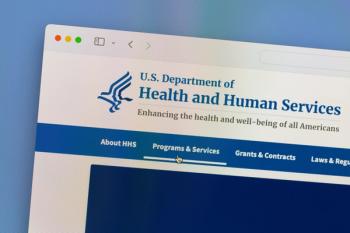
When Less Is More: Addressing Polypharmacy in High-Risk Populations
Andrew E. Esch, MD, MBA, discusses the need for systemic reforms to support pharmacist-led medication optimization in palliative and community-based care.
As digital health tools and artificial intelligence (AI)–powered clinical decision support systems become increasingly embedded in pharmacy workflows, pharmacists are gaining new opportunities to identify and address the risks of polypharmacy, particularly in high-risk populations such as older adults and those receiving palliative care. At the same time, evolving deprescribing guidelines and ongoing drug shortages have underscored the need for coordinated, patient-centered medication management strategies.
In this interview with Pharmacy Times®, Andrew E. Esch, MD, MBA, director of the Palliative Care Program Development at the Center to Advance Palliative Care, discusses how pharmacists use emerging technologies to streamline medication reviews, reduce therapeutic duplication, and engage caregivers in deprescribing conversations. Esch also examines persistent structural barriers—including limitations in pharmacist authority and reimbursement—as well as the critical role social determinants of health (SDOH) play in perpetuating inappropriate polypharmacy. Looking ahead, Esch outlines the policy, education, and team-based care reforms needed to elevate deprescribing as a standard of care across health systems.
Pharmacy Times: With new digital health tools and AI-driven medication reviews now more common, how are pharmacists leveraging these technologies to identify and resolve polypharmacy risks more efficiently?
Andrew E. Esch, MD, MBA: We’re seeing pharmacists really embrace digital health tools to help sort through the noise, especially for patients with long medication lists. AI can quickly flag potentially harmful interactions or medications that don’t make sense anymore, given someone’s goals or prognosis. That’s very important in palliative care, where we’re always balancing symptom relief with the burden of taking too many medications. These tools help focus the conversation on what’s truly helping and what might be time to let go of.
Pharmacy Times: Have recent updates to deprescribing guidelines or clinical decision support tools improved implementation in high-risk populations such as older adults or those with cognitive decline?
Esch: Recent updates to deprescribing guidelines and clinical decision support tools have become a lot more practical. The newer tools are more tailored to real-world complexity; they consider things like frailty, dementia, and limited life expectancy. This makes it easier for clinicians and pharmacists to say, “You know what, this medication might’ve made sense once, but not anymore.” That said, these tools are only helpful if pharmacists and prescribers know how to use them—and have the time and support to act on them.
Pharmacy Times: What barriers still exist in 2025 for pharmacist-initiated deprescribing, and how can regulatory or reimbursement models be improved to better support pharmacists in this role?
Esch: The biggest barrier for pharmacist-initiated deprescribing is structural. Many pharmacists don’t have the authority or time to act on what they find. And even when they do identify medications that should come off the list, getting a prescriber to agree—or even getting in touch—can be a whole other hurdle. If we want pharmacists to play a bigger role here (and they should), they need to be compensated for that work and be given the legal standing to initiate those changes, especially in settings like long-term care or home health.
Pharmacy Times: How does polypharmacy impact patients receiving palliative care today, and has there been progress in distinguishing between appropriate and burdensome medications in this setting?
Esch: Polypharmacy is still a major issue in palliative care. We often inherit patients who are on 15 to 20 medications, many of which are no longer helping or may even be making them feel worse. The good news is we’ve made progress—there’s more clarity now around what’s appropriate depending on the patient’s stage of illness. There’s still work to do, but I think more clinicians are getting comfortable asking, “Is this medication helping this patient now?”
Pharmacy Times: What role do SDOH play in the persistence of polypharmacy, particularly in underserved communities, and how can pharmacists address these upstream issues?
Esch: SDOH play a huge role in the persistence of polypharmacy. Patients in underserved communities may see multiple providers, fill medications at different pharmacies, or feel pressure to keep taking whatever they’re prescribed, even if it no longer makes sense. Pharmacists are in a unique position to catch this, especially those embedded in the community. They can spot these patterns and work with patients and caregivers to streamline things, especially when they work closely with community health workers or home visit programs.
Pharmacy Times: How are pharmacists engaging with caregivers and families to support deprescribing conversations, particularly in home- or community-based care models?
Esch: Caregivers are often managing medications day-to-day, so bringing them into the conversation is key. In home-based care, pharmacists are doing more outreach—via phone, video, even in-person visits—to walk caregivers and families through what’s necessary and what might be optional. These conversations can be incredibly reassuring, especially when framed as, “Let’s focus on what’s really helping your loved one feel better.”
Pharmacy Times: Are there disease states or care transitions in 2025—such as hospital discharge or long-term care admission—where polypharmacy has become more or less of a concern?
Esch: Transitions are still danger zones for polypharmacy, though we’ve made some progress. More hospitals now involve pharmacists in discharge planning, but medications still tend to accumulate during acute illness, and there isn’t always a prescriber to clean up the list. In chronic diseases like heart failure or diabetes, we’ve gotten better at scaling back when palliative care gets involved, but there’s a lot of variation depending on the team and the health system.
Pharmacy Times: Given ongoing drug shortages in 2025, are there new risks of inappropriate substitutions contributing to polypharmacy or therapeutic duplication?
Esch: The ongoing drug shortages are creating a bit of a mess, causing polypharmacy and duplication. Patients are now often given alternatives that sound different or come in new formulations, which can lead to confusion or even double dosing. I’ve seen patients on 2 medications, which are doing basically the same thing, because a substitute was added without stopping the original. Pharmacists are doing their best to keep track, but it’s another reason why regular medication reviews are so important right now.
Pharmacy Times: Looking ahead, what systemic changes—whether policy, education, or payment reform—do you believe are most needed to make deprescribing a routine part of clinical care?
Esch: We need to treat deprescribing as a core part of good patient care, not as an afterthought. That means teaching it in medical and pharmacy school, building it into quality metrics, and paying people to do it—and not just write new prescriptions. I’d also love to see more integrated teams where pharmacists can work side by side with clinicians and have real authority to streamline medications based on what matters most to the patient. That’s how we can make this routine, not exceptional.
Newsletter
Stay informed on drug updates, treatment guidelines, and pharmacy practice trends—subscribe to Pharmacy Times for weekly clinical insights.













































































































































































































